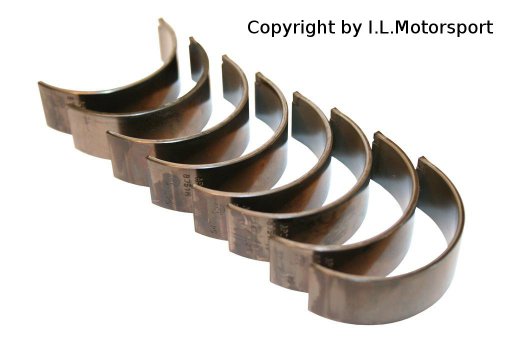Maruha F112 Connecting Rod Bearing Set
Delivery time for other countries differs
- Mazda MX-5 MK1, MK2, MK2,5 1989 - 2005
- Item weight: 0,05kg
Consequently, people longed for something instead of bearings with sintered alloy and aluminum bearing alloys that had been widely used but that could not work under the heavy loads.
Copper based alloy F112 used as main and connecting rod bearings of high-powered machines such as racing cars, heavy-duty trucks and large industrial machines is excellent at high speed and heavy loads.
The material gained popularity in the United States, that was the first country to spread high-powered engines. Furthermore, it was introduced to Europe too.
Although it takes a huge equipment cost to produce the alloy with high technology, why is F112 becoming popular in a lot of countries?
We will show you its structure and features comparing to a sintered alloy that is copper-based.
The kelmet made of sintered copper lead alloy powder cannot withstand heavy loads.
The copper alloy powder bonds are weaker than F112 as the powder is sintered at lower temperatures than the copper melting point. It tells you the powder bonds are easy to break under high loads.
F112 consisted of the overlay metal and the copper based alloy on the backing steel plate has the copper alloy bonds formed vertically.
Some of them also spread from the main stems like branches.
The lead alloy acting as a lubricant disperses among the bonds.
Heavy loads pressuring vertically are hard to damage the F112 structures.
The copper based alloy F112 has superior corrosion resistance to the sintered alloy.
The overlay surfaces prevent both of them from getting damaged.
However, the sintered alloy is likely to become corroded after the overlay is worn out.
The lead that forms the lead bronze layers beneath the overlay surface has corroded towards the inside.
It causes the layers to become caves destroyed by the loads.
The sintered alloy corrosion advances because the lead bronze layers are arranged in rows.
In contrast, the dispersed lead of F112 can avoid the deep corrosion.
The overlay metal covers the bearing surface to enhance the oil absorption and the running-in lubrication.
Copper based alloy F112 has excellent load bearing capacity, but at the same time, it is worse in several performances like the surface performance, the oil absorption and the lubrication that are necessary to operate the bearing completely.
The overlay metal can improve these abilities and it prevents the seize damage caused by the shaft misalignment, the poor surfaces of the crankshaft and something in the oil.
- Size of Maruha Power Metal Bearing Line-
Main Bearing
Size Range
A 2.002-2.006mm
B 2.006-2.010mm
C 2.010-2.014mm
Connecting Rod Bearing
Size Range
A 1.500-1.504mm
B 1.504-1.508mm
C 1.508-1.512mm





